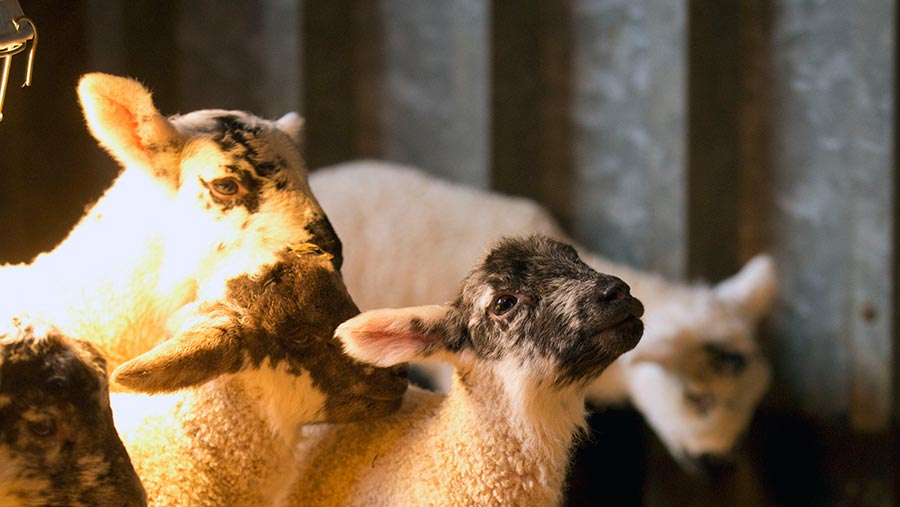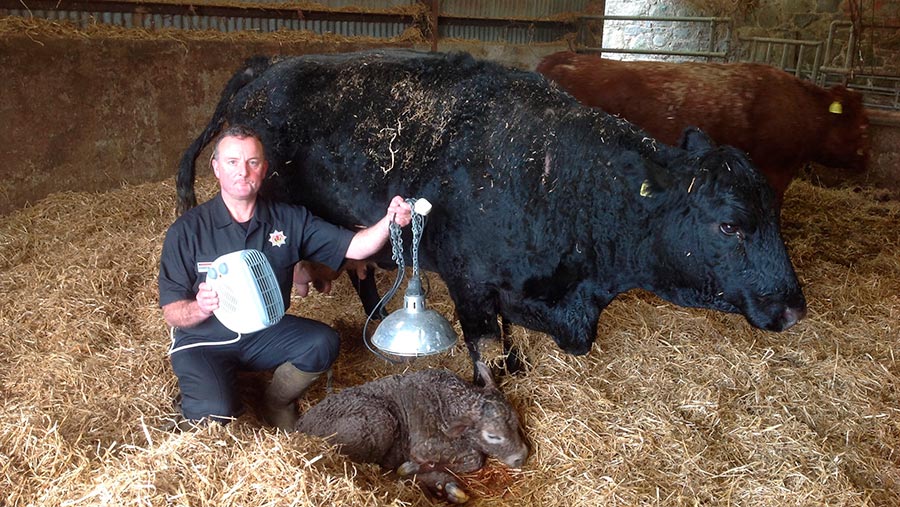Firefighting farmer issues lambing heat lamp warning
 © Tim Scrivener
© Tim Scrivener A firefighting farmer has called for caution over the potentially devastating use of heat lamps ahead of the spring lambing season.
Stewart Macpherson has farmed for more than 25 years – and since 2010, the dad-of-three has helped keep his community safe as a retained firefighter at Foyers, on the banks of Loch Ness.
The Macphersons are currently preparing to welcome thousands of newborn lambs to the family-run Dell Farm in Whitebridge, near Inverness.
See also: Farm fires – planning a livestock evacuation
And Mr Macpherson has warned against the increased use of heat sources in sheds and barns.
“All across the country, especially at this time of year, firefighters respond to fires at farms caused by heat lamps or fan heaters,” he said.
“Last year, there was a terrible fire caused by an unwell calf knocking over a lamp in a barn full of combustible hay bales.”

Stewart Macpherson
“I’ve been a farmer for a long time, and I am well aware of the critical importance of using a heat source to warm a newborn lamb to boost its chance of survival.
“Farmers and crofters will continue to use these devices, that’s not debatable – but I would urge caution, and for anyone using these heat sources to take simple but hugely effective measures to reduce the risk of fire.”
Rural Risk Project
There are more than 9,000 farms in Scotland, and the Scottish Fire and Rescue Service (SFRS) regularly responds to a host of farm-related incidents, from fires to flooding to large animal rescue.
The fire service has already been working in close partnership with rural communities to ensure general safety.
In 2016, the SFRS launched the Rural Risk Project (RRP) in the Highlands, south Lanarkshire and Dumfries and Galloway in partnership with NFU Scotland and Police Scotland.
The RRP is a secure database that exists to ensure local firefighters are aware of any risks if called to an emergency at a farm – and Mr Macpherson has urged all farmers and crofters to sign up. For more information visit the Scottish Fire and Rescue Service website.
“This data is absolutely vital for the safety of firefighters first and foremost, but could also be crucial in terms of reducing any loss or damage at your farm in the event of emergency,” said Mr Macpherson.
Eight farm fire prevention tips
Every year in the UK, more than 1,700 farm buildings and 66,000 areas of grassland are destroyed by fire; 50% of these fires are started deliberately, either as an act of mindless vandalism or a fraudulent insurance claim.
Here are eight sensible measures, courtesy of Cheshire Fire and Rescue Service, to reduce the risk of fire on farms.
1. Ensure any heat sources are secured and kept away from flammable material.
2. Keep a fire extinguisher in a nearby location to farm buildings.
3. Carry out regular electrical safety checks.
4. Keep fertilisers and pesticides under lock and key.
5. Store petrol, diesel and other fuels in secure areas; storage tank outlets should be padlocked.
6. Prepare a fire routine and action plan and inform all farmworkers.
7. Carry out an arson survey around the farm to identify areas where arsonists could strike, with assistance of local crime prevention officers/fire service.
8. Assess farm security measures – for example, lighting, fencing and locks.
